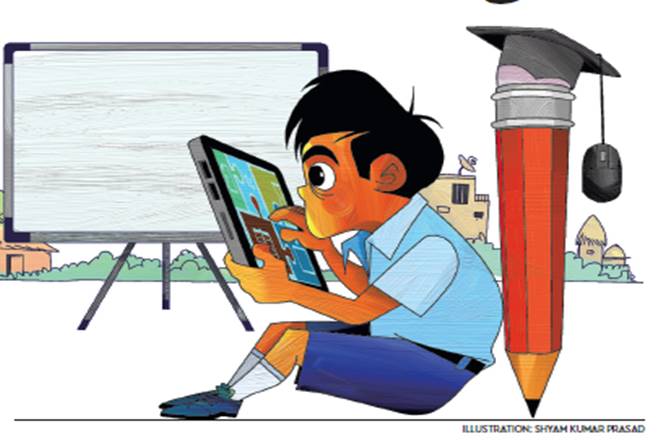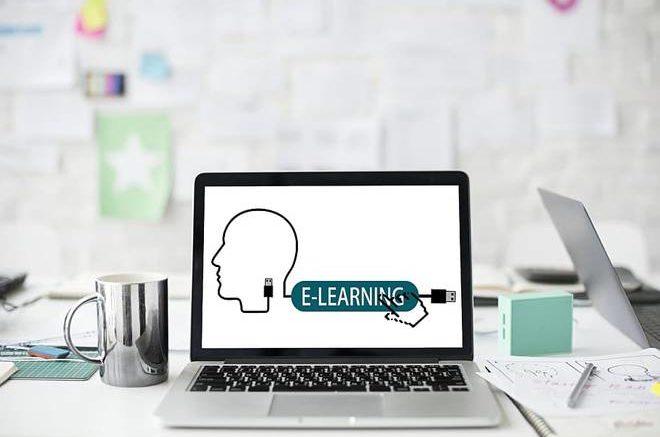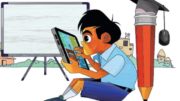In the year of pandemic, 2020, India, a developing nation started having its first cases of infection in the month of February. By March 22nd, there were enough cases for Govt. to call for a lockdown of the nation with the immediate closure of all educational institutes. This led to the start of a new era of a method of teaching in this sphere of the Globe called Online Teaching. This might be a common practice in developed nations like Europe and the US, but it was new for the Indian subcontinent, where there is one of the largest populations of the young generation undergoing their basic education.
This led to the haphazard decision making of managing online classes for the institution and the teachers who had never done so before. By the third week of March, almost all the educational institutes from nursery schools to the Universities were started conducting the Online Classes.
Among the Herd, I was also one of them. There were several platforms, suggested to use as a means to deliver the study material and classes to the Students. The most widely used were:
- Google Classroom
Zoom
WhatsAapp
But the country where, 4G runs at the speed of 2G, and when most of the students still have yahoo mail, it was really difficult to use Google Classroom and Zoom effectively. Also, due to remote nature and terrains of most of the places with moody weather, the network connectivity was always disturbing which led to the decrease of efficiency of these two platforms. WhatsApp is hence the app that is widely used by both students and teachers to communicate, share, and have online classes. Due to easy access of this app, almost all the teachers preferred choice became WhatsApp and sensing the opportunity, the app developers changed the number of participants from 4 to 8 at one go, and by just updating the app from Google Store users could reap the benefit.
But now in absence of Zoom, it was really difficult to deliver the Video lectures online, so then came the storm of You Tube classes, developed by Individual teachers, Institutions, Government, Private players, etc, Like cytokines storm after Corona infection, there was a storm of video lectures in youtube some requesting heavily on pushing like and share buttons.
You Tube
So, educationists started developing their own youtube lectures for their students or for the larger masses. This, of course, was no an easy task to develop youtube content, almost regularly and in a time-bound manner for each and every topic of the semester. Not only that, but teachers also needed to make sure that students were watching those videos, making notes, taking tests, exams, and correcting the answer scripts along with maintaining attendance. It was like Tendulkar playing Cricket, Football, and Kabaddi at the same time.
This drastically reduced the quality of education imparted to the students due to the combination of all these parameters. So I thought that it is of no point creating the same youtube content which is already present in the platform, and in most cases are better than what I would have made or created. There are some professionals, who do this job more efficiently. So, I thought, instead of making my own videos I thought of making use of the lecture videos which is already present in the platform.

This will save lots of my time, students would get better study materials and can access at any instant of time. But like there may be many ways to reach a particular point from any point, in the world of internet of also, there are many materials, some are useful and some are completely useless, so what was our job is to find the appropriate materials in the youtube, which is relevant, to the point, as per the syllabus. So for example “Atomic Structure” if I want to teach, I went through several videos of the youtube, chose the best one, downloaded it using youtube downloader or copied the link of the video, and sent it to the students via WhatsApp. This drastically reduced load to the teacher and students whereas increase efficiency.
So students can watch the lecture anytime they want, in case they do not understand anything they can individually approach the teacher and clear their doubts. So this methodology demands that teachers should be available for their doubt clearance whenever required. When they can make pizza watching youtube video they must be able to understand lectures of their subjects when the teacher is there to help anytime.
So following are the steps taken to teach online:
- Surf through several videos of the youtube, for the particular topic that has to be taught. ( if you have your own video, you can use them)
Choose the best one and download it using youtube downloader or copy the link.
- Send to students via WhatsApp.
- Ask students to make query if anything in the video they didn’t understand and attend them individually through WhatsApp or phone ( or any social media platform)
- When one unit is over, make questions, short, long and numerical covering each and every topic of the unit, and send them to students. ( Do not forget to include past board exam papers, competitive exam questions form the UNIT)
- Tell students to prepare the handwritten notes of topics in their copies. This will make sure they work hard for the paper.
- Tell them to send back the notes and go through it once and tell them to make necessary changes. This notes will be very useful in future.
- To assess how much students have understood, Viva can be taken for each unit, via WhatsApp, zoom or telephonically, whichever deem fit.
Earlier we assumed that pandemic wouldn’t last long and would be over in one or two months, so our approach was also for the short term. But now it does not seems so, and also like Blessings in Disguise, the standardization of a robust online teaching system, will not only help to cope up with situations like Pandemic but also other similar situations like War and other natural calamities where our learning gets hampered. Like the saying goes whatever happens Learning shouldn’t get stopped. Another most important aspect is education through distance.
Distance education is one of the important sectors of education which provides education for many individuals who can not afford or have time for the regular mode of education and sadly distance education does not get recognition as much as regular courses due to its mode. The development of such online classes will not only fill the gap between regular and distance education but also will act as a bridge between them.
The final assessment of any course is the final term exam, which certifies whether a particular individual has obtained the necessary knowledge/skill or not, or is fit for industry or not. Sadly, the online assessment wasn’t that effective in assessing this quality among the students. Hence, this final examination has to take place offline like, distance education like IGNOU does or Online via National Testing Agency like body.
So for the final assessment, I propose two scenarios :
- Online:
- Comprehensive Viva:- extensive viva voice of the individual students for the subject
- Written:- In the same mode as conducted and at par by National Testing Agency.
- Offline:
- Written: Traditional written examination at par by IGNOU- distance education unit of Govt. of India.
- Written examination in respective institutes.
The benefit of Online Education :
- The transition would provide education to the lower section of the society who can not afford regular education
- The students from villages, where the quality of education is not good, or materials access is not there.
- Recognition of Online courses as the Regular classes in both Job opportunities and in recognition.
There is saying that “Change is Only Constant “ and I think it’s been a long time we have stayed without a change in our education system since time unknown.
Writes: Anoop Ghonday






Leave a comment